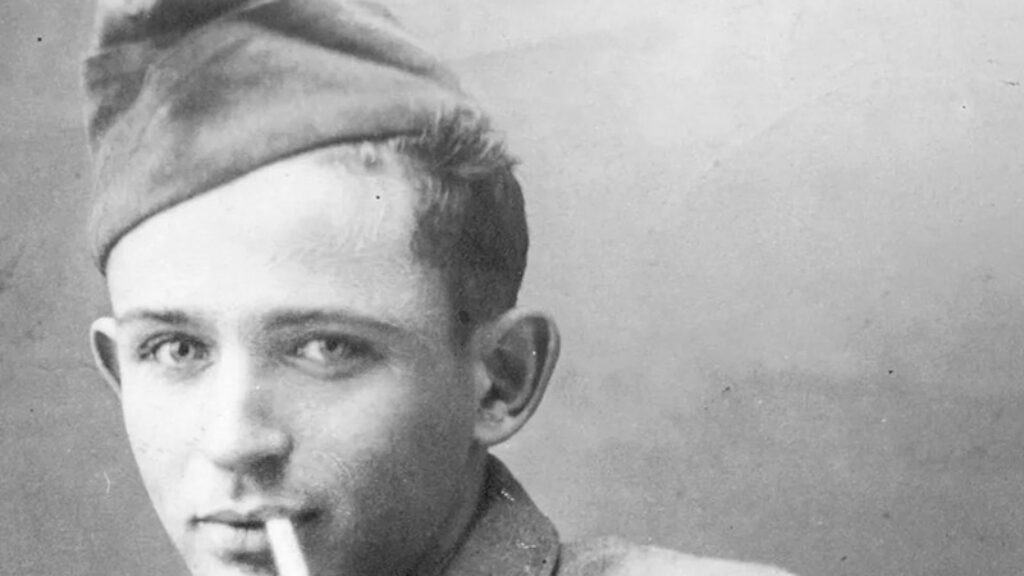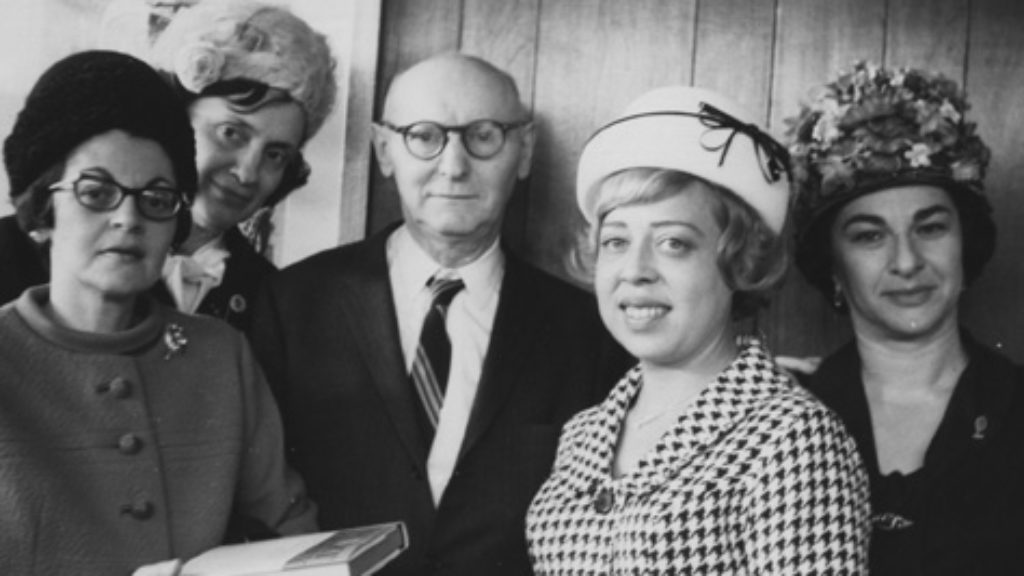Letters, Winter 2017
Critical Powers
Dara Horn’s review of Cynthia Ozick’s latest collection of essays (“Cynthia Ozick: Or, Immortality,” Fall 2016) was wonderful—elegant and informative. It makes me want to read more of both Horn and Ozick. But please, tell me, what kind of powers does Cynthia Ozick have that she can determine anyone else’s reading habits? Care to make a case for Bellow’s significance? Go ahead, cite his ideas and the joy in reading his works, but to do so at the expense of his peers seems petty.
Joel Drucker
via jewishreviewofbooks.com
Pity the Poor Irisher
I greatly enjoyed Joseph Epstein’s essay on Jewish prize fighters (“Jewish Pugs,” Fall 2016) and would like to add an anecdote about Benny Leonard and Jewish boxers who changed their names to disguise their careers from their old-world families. Leonard was fighting someone with an Irish name and beating the hell out of him. When they fell into a clinch, the “Irisher” whispered “Rachmonis. Rachmonis.” Benny carried him for the rest of the fight.
Dan Rezneck
Washington, D.C.
Evil Inkblots
The meaning of the Rorschach tests administered to the defendants at the Nuremberg trials is and probably always will be ambiguous, but it is further obscured by Dr. Rothstein’s decision (which may well have been that of the book under review, Dimsdale’s Anatomy of Malice, too) to couch the problem in terms of the conflict between Douglas Kelley and Gustave Gilbert, who administered the exams. (See “Psychology at Nuremberg,” Fall 2016.) Kelley’s authority on the Rorschachs was hopelessly compromised, not only by the fact that he did not speak German well and had to administer the tests through an interpreter, but by the circumstances of his suicide, which revealed his appalling identification with Hermann Göring, whom he had described in his book as a “brilliant, brave, ruthless, grasping, shrewd executive.”
Gilbert, for his part, though able to administer Rorschachs in German, was not well qualified to interpret them, and he made little use of them in his book, The Psychology of Dictatorship. He nonetheless regarded the Nuremberg records as his private property (even though he had obtained them as an officer in the U.S. Army) and they remained unpublished, despite their great historical value, for 30 years until Florence Miale and I incorporated them in our book, The Nuremberg Mind: The Psychology of the Nazi Leaders. Gilbert was so offended that we had published “his” records that he threatened to sue us and was only dissuaded from doing so when we offered to let him write the introduction to our book. Not long after our book was published, I received the text of Adolf Eichmann’s Rorschach as well as his responses to a large battery of other tests (see my article, “The Murderous Mind,” The New York Times Magazine, Nov. 27, 1977). These included many original drawings by Eichmann, which I deposited in the Library of Congress.
The broadening of the controversy over the meaning of these data was facilitated in part by the publication of Stanley Milgram’s Obedience to Authority in 1974, which in turn had rekindled interest in Hannah Arendt’s claims regarding the “banality” of Adolf Eichmann. The issue was never one of whether the Nazis were “insane,” as Dr. Rothstein seems to suggest in his review. It was, rather, whether deeds of great evil are performed by “ordinary” people acting out of obedience to authority. Certain psychologists, among them Molly Harrower, whom Dr. Rothstein rather eccentrically refers to as “a revered Rorschach expert,” found that the Rorschach data, as well as Eichmann’s responses to other tests, supported this viewpoint. On the other hand Florence Miale, who indeed was “revered” for her skill, found that the test data clearly led to a conclusion that the responses were those of markedly psychopathic personalities, many with extreme tendencies toward violence. The difference between these two sets of conclusions reflects in part the very different interpretive techniques employed. Harrower and her associates depended primarily on mechanistic, quantitative scoring techniques that obscure the often subtle idiosyncratic nuances that the assessment of a personality demands; Miale, on the other hand, regarded each response as a metaphor for the person who made it, and her analyses—often magnificent tours de force—consisted largely of the explication of these metaphors; they are vividly variegated portraits. Our book, which includes a chapter on Miale’s technique, demonstrates her point that the correct interpretation of psychological test data depends above all on the skill of the interpreter.
Even 40 years ago, when we wrote our book, Miale and I recognized that the viewpoint advanced by Arendt and by Milgram (for all the blatant dishonesty of the former and the glaring methodological shortcomings of the latter) reflected the ideological conviction prevalent in the academic world that evil behavior is a form of social malfunction rather than the product of evil minds. It seems from Dr. Rothstein’s review that this conviction remains entrenched today.
Michael Selzer
Colorado Springs, CO
Aaron Rothstein Responds:
I thank Professor Selzer for his thorough, thoughtful letter. We agree, it seems, more than we disagree. The problem of interpreting the Rorschach exams is not solely due to the conflict between Kelley and Gilbert, though that does certainly obscure matters. As I mention in the review, other confounding factors included the small sample size, the fact that the subjects were imprisoned and on trial for their lives, and the lack of common psychiatric vocabulary and standards at the time. Professor Selzer rightly points out that Kelley’s use of an interpreter and his soft spot for one of the demonic giants of the 20th century played a role in obfuscating the truth, too. Setting aside the question of the validity of Rorschach tests (the evidence is tenuous and controversial), it is incredibly difficult if not impossible for a clinician to look back at these interviews and make diagnoses from them. The interviewers’ biases necessarily distort our impressions—they chose to write down certain responses and, perhaps, ignore others; they asked certain questions but neglected others; and so on.
This further confirms the difficulty of locating a psychiatric trend among these monstrous Nazi
génocidaires. Indeed, the only very clear trend is that of anti-Semitism, a product of evil minds (not just a form of social malfunction) as well as a pernicious disease which persists under various guises, creating a bizarre collection of ideological bedfellows.
Theologico-Political Query
I think that these two distinguished Orthodox rabbis are speaking past each other (see Shlomo Riskin, “Religion and Power,” Summer 2016, and Shlomo Riskin and Jonathan Sacks, “Religion, Power, and Politics: An Exchange,” Fall 2016). As Rabbi Riskin suggests, it appears that Rabbi Lord Sacks does not quite want to acknowledge the full implications of his insistence upon reading the separation of church and state into biblical and rabbinic Judaism so unequivocally. But has Rabbi Riskin really thought through his commitment to a Religious Zionist vision that views the state in a messianic light, however subtle, on the one hand, and his view of that same state as a liberal democracy on the other?
Talya Cohen
Tel Aviv, Israel
Funny but Serious?
With regard to Shoshana Olidort’s review of the new novel by Jonathan Safran Foer, the fact is that Ms. Olidort does not want a funny novel (“There He Goes Again,” Fall 2016). She wants serious. Fine, but everyone knows how unlikely it is for everybody in the room to get a joke. It seems, in fact, that Foer may be ambivalent about how comic or serious it is possible to be in our time. In that sense, his novel is a profound dramatization of ambivalence and its price. Perhaps it is more serious than even Ms. Olidort asks for.
rosenbergs1
via jewishreviewofbooks.com
A Day at the Races
During my several visits to Cleveland I have enjoyed davening at the Green Road Synagogue (“Marmorshers!,” Fall 2016) without realizing the richness of its history. Its congregants certainly did not strike me as either “horse thieves” or their descendants. I have, however, davened with a minyan in my hometown of Toronto that took great pride in its unsavory heritage. It was said that each morning the men of that community in Poland would each leave their homes with a rope and come back at the end of the day with a horse attached to it. I was also told that the construction of the new synagogue building in the 1960s was financed by some particularly successful days at the racetrack.
Stan
via jewishreviewofbooks.com
Suggested Reading

Another Round with Norman Mailer
Norman Mailer had the gift of enlivening everything he touched. And he touched almost everything, from politics to Hollywood to Sports. But his Jewish novel stayed in the drawer.
The Rothschilds of the East
The Splendor of the Camondos and the pity of it all.

A Harem of Translators
Singer insisted that all foreign-language translations of his work be based on the English versions. And most of them were done by young women who closer to typist-editors than true translators.
Valhalla in Flames
To give their "Thousand Year Reich" a patina of tradition, the Nazis co-opted the German and Western European cultural canon.
Comments
You must log in to comment Log In